Implications for Asian Regionalism and Late Development
Negative Scenario (Synopsis of Japanese Sources)
Gilbert RozmanXi Jinping’s “One Belt, One Road” initiative, even more than Barack Obama’s “rebalance,” is a bold reconceptualization of the economic, geopolitical, and regional identity of Asia. The positive scenario, even if some reservations may exist about contents and scope, sees a good chance of a transformative impact. The negative scenario views this plan, despite some important infrastructure projects, as likely to be doomed. Recent writings in Japanese convey the negative viewpoint; this response draws on them.
“One Belt, One Road,” in essence, is a design for regionalization leading from the Chinese hub through spokes passing through Central Asia, Southeast Asia, and South Asia. For massive infrastructure investments in these areas to be productive will require a favorable economic environment there, which may be influenced by the security and political environments as well. When the Asian Infrastructure Investment Bank (AIIB) was launched on January 16, 2016, there was much questioning in Japan about its prospects and the wider prospects of the “One Belt, One Road” plan.
By reviewing Japanese publications, whose views on this are rather similar to US writings although more numerous, one can observe a wait-and-see attitude toward the “One Belt, One Road” initiative with skepticism mixed with concern. At first, skepticism centered more on security than on economics, while concern dwelled on the spinoff from infrastructure projects to exclusive regional integration. Later, skepticism intensified, as the economics of the initiative grew more doubtful. The heightened level of negativity can be found in coverage of Southeast Asia, Central Asia, and—less noticed—South Asia, which are the three spokes of this initiative.
Japanese competitiveness over Southeast Asia is longstanding, and we can expect that much of Abe Shinzo’s USD 110 billion fund to build infrastructure announced in May 2015 and the appointment of Kitaoka Shinichi to head the Japan International Cooperation Agency (JICA) were aimed accordingly with an eye on cooperation with the United States, which holds a Sunnylands summit with the leaders of the Association of Southeast Asian Nations (ASEAN) this month. Abe’s October trip to all five countries of Central Asia may have stirred hopes of competing with China in that arena, unlikely as that may be. Abe’s December visit to India and the signing of a high-speed railroad deal was preceded by Xi’s visit to Pakistan eight months prior, which boosted the China-Pakistan economic corridor. Thus, Xi’s initiative has spurred an infrastructure race—clearly seen in the bidding for a high-speed railroad in Indonesia,1 which the Chinese won. It is no wonder then that the Japanese are writing quite a lot about China’s plans and their prospects of success, casting doubt on China’s chances of success.
Southeast Asia
Kawashima Shin pinpoints the significance of “One Belt, One Road” as a rejection of the centrality of ASEAN in regional cooperation, arousing concern within ASEAN.2 In the context of lessened Chinese respect for ASEAN’s leadership role since 2009, this raises questions about the promise of China’s approach for regionalism beyond the infrastructure projects being funded. Richard Weitz in the last issue of The Asan Forum and others have recognized the challenge posed by “One Belt, One Road” to the Shanghai Cooperation Organization (SCO), defying Russia’s prior tolerance for China’s activities in Central Asia even if Putin chose to declare that it actually strengthens the SCO and is compatible with an Eurasian Economic Union (EEU) regional framework he is advancing. Much has been written about India’s alarm that China has been trying to deny it any leadership role in South Asia, encircling it through bilateral arrangements with states. Through most of the 2000s, China had been a booster of Asian multilateralism (including the Six-Party Talks) without pressing its own leadership agenda, but under Xi it appears to be confident that it can bypass or reconfigure the existing institutions to insist on its own agenda.
Kawashima asks if “One Road, One Belt” will fade away as no more than a slogan or if it will become a reality, pointing to uncertainty about China’s economic reforms, particularly of state-owned enterprises, and about surplus labor as conditions in the Chinese economy are changing. He draws comparisons with Japanese conceptions of regionalism in the 1970s and 1980s, when there was optimism about reorganizing Asia around some notion of Asians in charge of Asia, but in China’s case, the emphasis on achieving this in the realm of security is a clear contrast. As belt-tightening deepens in China, he finds that local economies critical to this program are being hard hit, as they see “One Belt, One Road” mainly as a way to extract more money from Beijing.3
Asahi Shimbun recently asked about the impact of the slowdown in China’s economy and the lessening of China’s self-confidence, which earlier had given it courage to lead in establishing a financial institution to go head to head with existing ones led by the developed countries. It noted that at the opening ceremonies for the AIIB, Xi Jinping spoke hopefully of making the world economic system fairer and providing vast assistance to developing countries, as Chinese sources discussed adding 30 or more states as members along with the 57 that have already joined. Yet, the article pointed to new headwinds: the Federal Reserve increasing interest rates, a slowing of economic growth rates, and increased lack of transparency in potential recipient countries. It also noted the lack of experience of the new bank, asking if the exporting states would find favorable markets in China, on which much is premised, or even whether the devaluing Chinese currency might invite a currency war.4 Yet, it added that the infrastructure needs of Asia are huge and warned that the AIIB cannot be totally overlooked, suggesting that the US-led World Bank and Japanese-led Asian Development Bank (ADB) will be cooperating. This progressive newspaper seeks a cooperative outcome.
Yomiuri Shimbun was more doubtful, saying that unease about the new bank has not been swept away. Noting that Xi said that he welcomes participation by it along with other banks in “One Belt, One Road,” Yomiuri saw this statement as revealing that the plan is to use AIIB for this purpose and to revive China’s growth via infrastructure projects abroad, including constructing ports with military use and easing the way for China’s maritime advance. Linked to these concerns are warnings of insufficient transparency. The article asserts that Japan and the United States have questions and will be looking for improvements through the participation of the European states that are supplying capital, while using the Japan-led ADB to urge conformity with international rules. The fact that Abe has announced a program to fund USD 110 billion in Asian infrastructure projects over the next five years, along with the ADB funding, should limit the possibility that China will do as it wishes is the message.5
Sankei Shimbun made its own assessment, expressing understanding that existing funding for infrastructure does not satisfy many countries, but worrying that the AIIB funds really are intended to realize “One Belt, One Road,” whose objectives are treated with suspicion. It also fears that environmentally harmful projects will be funded and concludes that through the ADB Japan should test whether international rules will be followed.6 The more conservative the Japanese source, the more alarm.
Central Asia
Claiming that the “great game” of the nineteenth century is on again, Gaiko devoted much of its November 2015 issue to Central Asia. Articles assumed that Japan is a player through its “Central Asia plus Japan” dialogue, convened in 2014 by the foreign minister and given new meaning by Abe’s unprecedented trip to all five countries on October 22-28. They describe this framework as conducive to foreign ministers, businessmen, specialists, and foreign ministry officials meeting. The real reason for optimism, it is argued, is that Central Asians continue to have high expectations and trust in Japan for its economic power, high-level technology and know-how, and continuous provision of assistance since their states gained their independence. Newly fearful of Russia after its invasion of Crimea and alarmed by China (its “Silk Road Economic Belt” puts China at the center of a regional cooperation network), Central Asian countries seek to limit dependence on them and increasingly count on Japan, one article explains, raising Japanese hopes.7
The coverage in Gaiko appears to grope for what Japan should do in the region. Its recent stress on agricultural assistance and support for light industry based on agriculture is seen as only an interim approach. The harsh environment as Russia and China’s economies slip and energy prices fall and as Afghanistan and ISIS raise fears of instability, is noted only in passing. While Japan at times has sought to apply the ASEAN model as the way to achieve a regional unit for the five states, which is sought, there is little confidence expressed in achieving intra-regional cooperation. There are elements of idealism, however, e.g., in the idea that the ASEAN transition can be replicated through official development assistance (ODA) and etc., leading even to democratization. Remarking that John Kerry coincidentally visited the region at almost the same time as Abe and convened the five foreign ministers to meet him, the article dismisses the US role as not showing much interest of late but also as a sign of great power balancing. Little notice is given to the Sino-Russian agreement to link the EEU and the “Silk Road Economic Belt,” although a working group to pursue this is noted and the prospect of a mixture of clashing and linking together is anticipated. It is clearly stated that Japan should not consider competing with China in the level of trade and ODA, but it is assumed that Japan can be more effective in its investments and assistance. Because of local concern over the growing presence of China, this is fertile soil for welcoming Japan, readers are told. There is an air of unreality to this narrative: no analysis of how Japan can deliver on these aspirations, no talk of coordination with the United States and the European Union (EU), and no realism about Chinese and Russian assets.
Conclusion
The negative news coverage of China intensified over its economic troubles, abuses of human rights, and expansionism. Even Nihon Keizai Shimbun on December 26 warned of China’s hundred-year plan to gain regional maritime domination. Fear of what China intends mixed with growing skepticism of what it can achieve characterizes the Japanese coverage that pertains to “One Belt, One Road.”
1. Yomiuri Shimbun reported on December 17 on the railroad wars between China and Japan in Southeast Asia, arguing that China won the war over the high-speed line in Indonesia, aiming to increase its influence in ASEAN, with conditions such as asking for no government guarantee and promising to complete the line in three years. Citing a source in the Japanese government, it anticipated that China would change its plan and have to commit more money. Other competitions continue in this fierce struggle, in which the launch of the AIIB will boost China’s capital for infrastructure.
2. Kawashima Shin, “Nitchu Kankei Wa Do Susumu No Ka?” Toa, no. 1 (2016): 13-15.
3. Ibid., 16-17.
4. Asahi Shimbun, January 17, 2016, 3.
5. Yomiuri Shimbun, January 18, 2016, 3.
6. Sankei Shimbun, January 17, 2016, 5.
7. Uyama Tomohiko, “Shin ‘Great Game’ Jidai No Chuo Ajia,” Gaiko, November 2015, 13-20; Kawato Akio et al., “Chuo Ajia Hatten No Kokusaiteki Jyoken To Nihon,” Gaiko, November 2015, 21-35; Mifune Emi, “‘Ichidai, Ichiro’ De Shikakeru ‘Chugoku No Mune’ E No Gaiko Senryaku,” Gaiko, November 2015, 36-43.

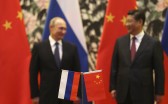
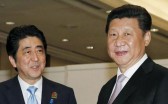
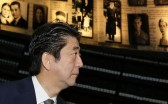
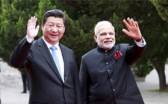

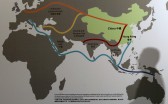
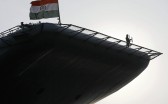

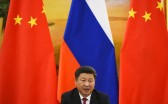
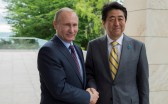
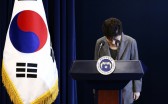

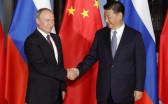
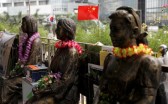
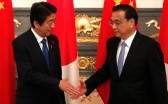
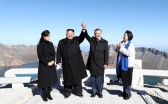

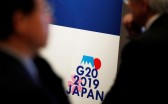




 Print
Print Email
Email Share
Share Facebook
Facebook Twitter
Twitter LinkedIn
LinkedIn